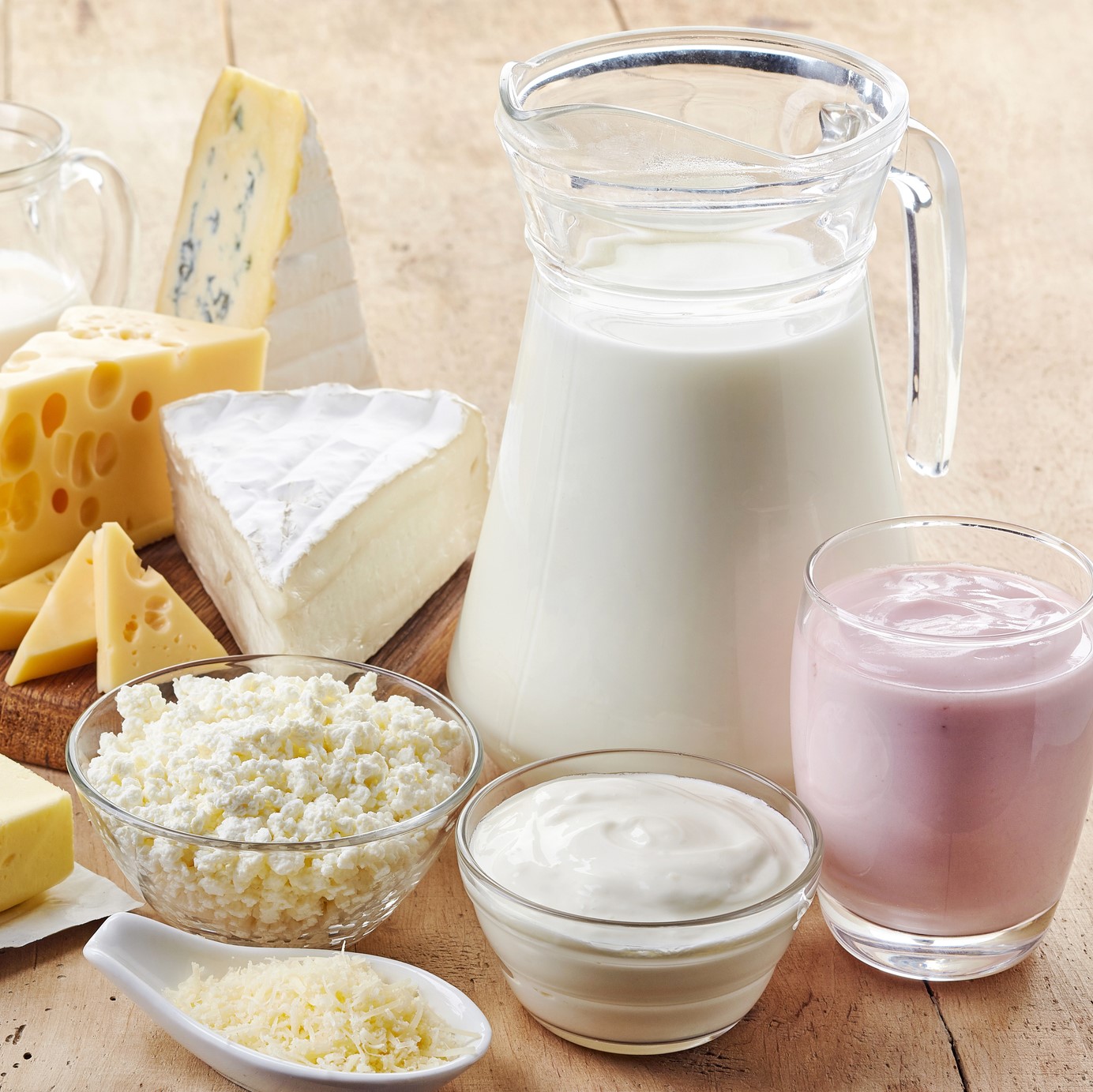Quick facts
- Milk is considered a priority food allergen by Health Canada. Priority food allergens are the foods that cause the majority of allergic reactions.
- Milk allergy is caused by a reaction to the protein in cow's milk.
- The protein in cow's milk is very similar to those found in milk from goats, sheep, and other mammals like deer and buffalo. Individuals allergic to cow's milk will likely experience reactions to other types of milk.
- Some people with milk allergy can consume extensively heated/baked products that contain milk (with the product completely cooked throughout). If you or your child has a milk allergy, please speak to your allergist before consuming any baked products containing milk.
- Many children with a milk allergy may outgrow the allergy within a few years. For others, a milk allergy can be a lifelong condition. If your child has an milk allergy, consult your allergist before reintroducing your child to milk products.
Remember
- A milk allergy is different than a milk (or lactose) intolerance. Unlike people with lactose intolerance, individuals with milk allergy have an immune system that reacts abnormally to milk proteins and it can be life-threatening.
- Lactose intolerance occurs when a person cannot digest lactose, a component of milk, because their body does not produce enough of a specific enzyme that breaks down lactose. Symptoms of lactose intolerance include abdominal pain, bloating, and diarrhea after milk ingestion. Lactose intolerance is not an allergy and is not life-threatening.
- If you are unsure whether you have a milk allergy or lactose intolerance, please talk to your doctor.
- If you are managing lactose intolerance, visit this Dietitians of Canada web page.
Allergic reactions to milk
If you have an allergy to milk, keep an epinephrine auto-injector (e.g., EpiPen®, ALLERJECT®) with you at all times. Epinephrine is the first-line treatment for severe allergic reactions (anaphylaxis).
__aware
Be allergy-aware: How to avoid milk
- Read ingredient labels every time you buy or eat a product. If the label indicates that a product “Contains” or “may contain” milk, do not eat it. If you do not recognize an ingredient, if there is no ingredient list available, or if you don’t understand the language written on the packaging, avoid the product.
- Do The Triple Check and read the label:
- Once at the store before buying it.
- Once when you get home and put it away.
- Again before you serve or eat the product.
- Always carry your epinephrine auto-injector. It’s recommend that if you do not have your auto-injector with you, that you do not eat.
- Check with manufacturers directly if you are not sure if a product is safe for you.
- Be careful when buying products from abroad, since labelling rules differ from country to country.
- Watch for cross-contamination, which is when a small amount of a food allergen (e.g., milk) gets into another food accidentally, or when it’s present in saliva, on a surface, or on an object. This small amount of an allergen could cause an allergic reaction.
__types
Other names for milk
- Ammonium/calcium/magnesium/potassium/sodium caseinate
- Beta-lactoglobulin
- Casein/caseinate/rennet casein
- Curds
- Delactosed/demineralised whey
- Dry milk/milk/sour cream/sour milk solids
- Hydrolyzed casein, hydrolyzed milk protein
- Lactalbumin/lactalbumin phosphate
- Lactoferrin
- Lactoglobulin
- Milk derivative/fat/protein
- Modified milk ingredients
- OptaTM, Simplesse® (fat replacers)
- Whey, whey protein concentrate
__sources
Possible sources of milk
- Artificial butter, butter fat/flavour/oil, ghee, margarine
- Baked goods and baking mixes
- Buttermilk, cream, dips, salad dressings, sour cream, spreads
- Canned tuna, e.g. seasoned or mixed with other ingredients
- Caramel colouring/flavouring
- Casein in wax used on fresh fruits and vegetables
- Casseroles, frozen prepared foods
- Cereals, cookies, crackers
- Cheese, cheese curds
- Chocolate
- Desserts
- Egg/fat substitutes
- Flavoured coffee, coffee whitener, non-dairy creamer
- Glazes, nougat
- Gravy, sauces
- High protein flour
- Infant baby cereals/infant formula, follow-up formula, nutrition supplements for toddlers and children
- Kefir (milk drink), kumiss (fermented milk drink), malt drink mixes
- Meats such as deli meats, hot dogs, patés, sausages
- Pizza
- Instant/mashed/scalloped potatoes
- Seasonings
- Snack foods
- Soups, soup mixes
- Soy cheese
__non_sources
Non-food sources of milk
- Cosmetics
- Medications and health supplements
- Pet food
Ingredients that do not contain milk protein
- Calcium/sodium lactate
- Calcium/sodium stearoyl lactylate
- Cocoa butter
- Cream of tartar
- Oleoresin
Note: The above lists are not complete and may change.
__report
Report a reaction
If you believe you may have reacted to an allergen not listed on the packaging, you can report it to the Canadian Food Inspection Agency, which may issue a product recall. Find out more on our Food Labelling page.

